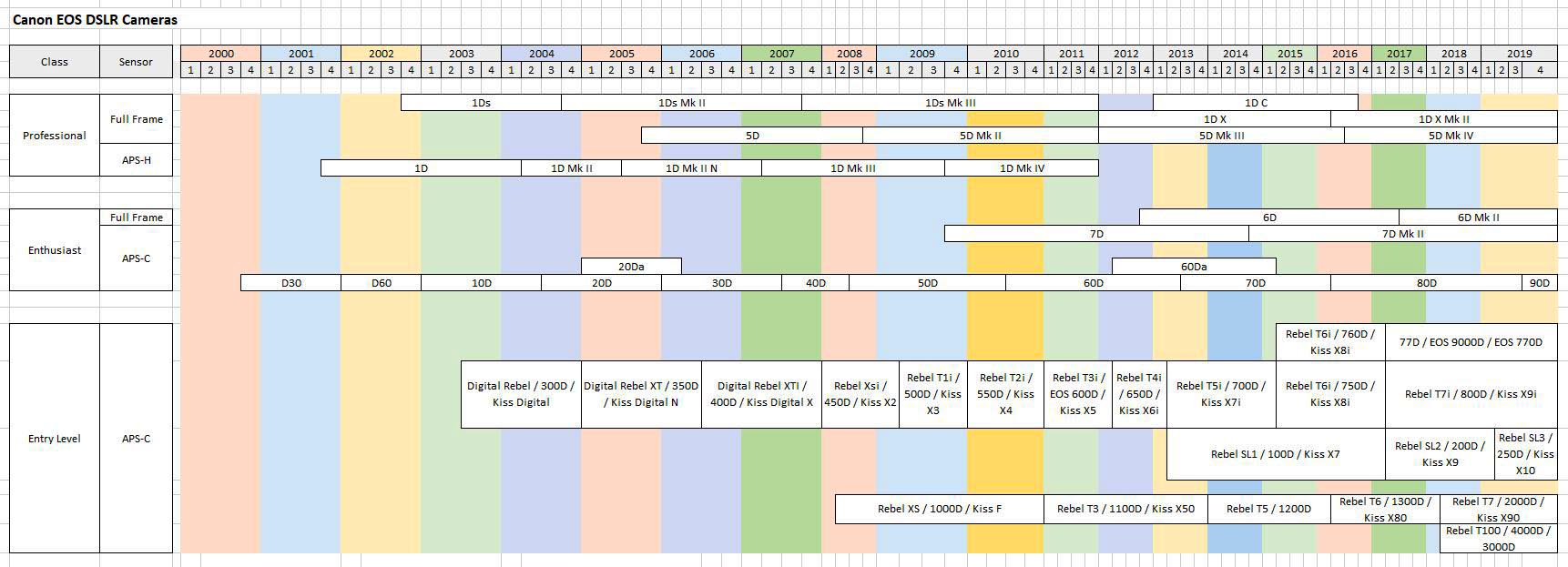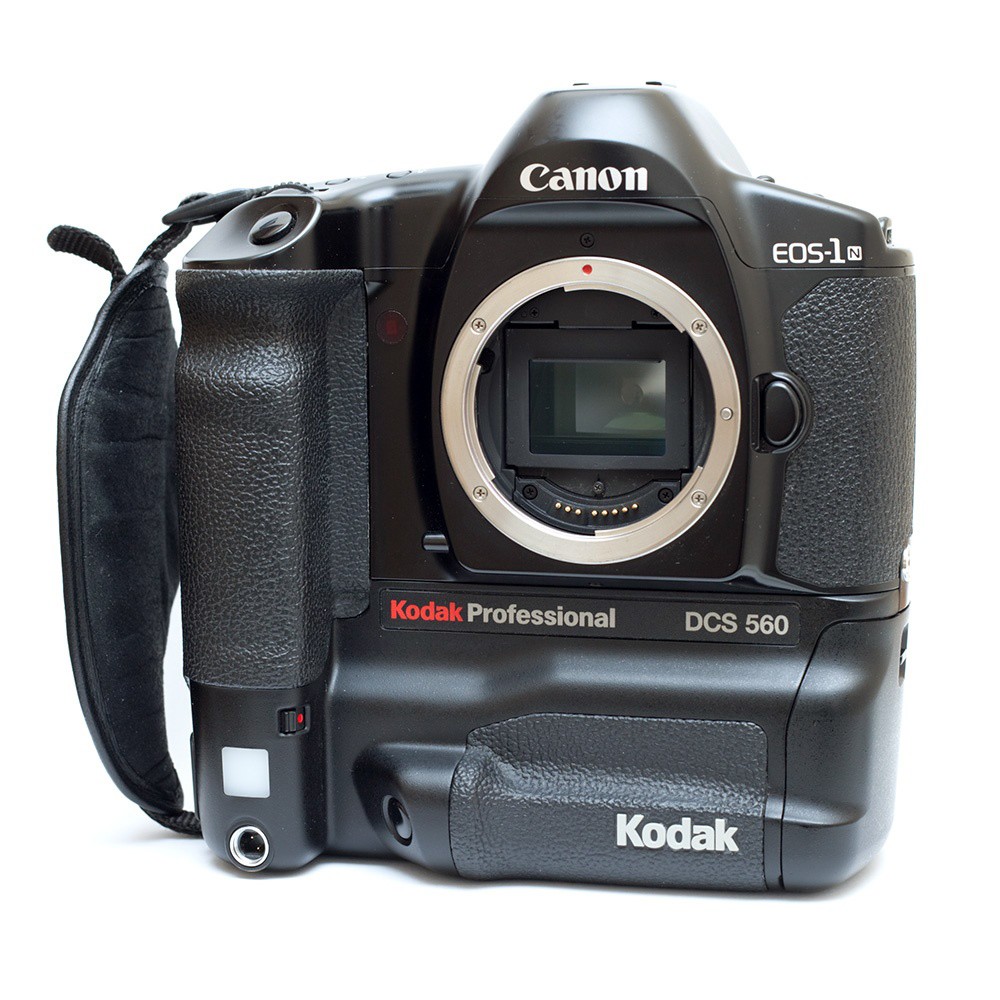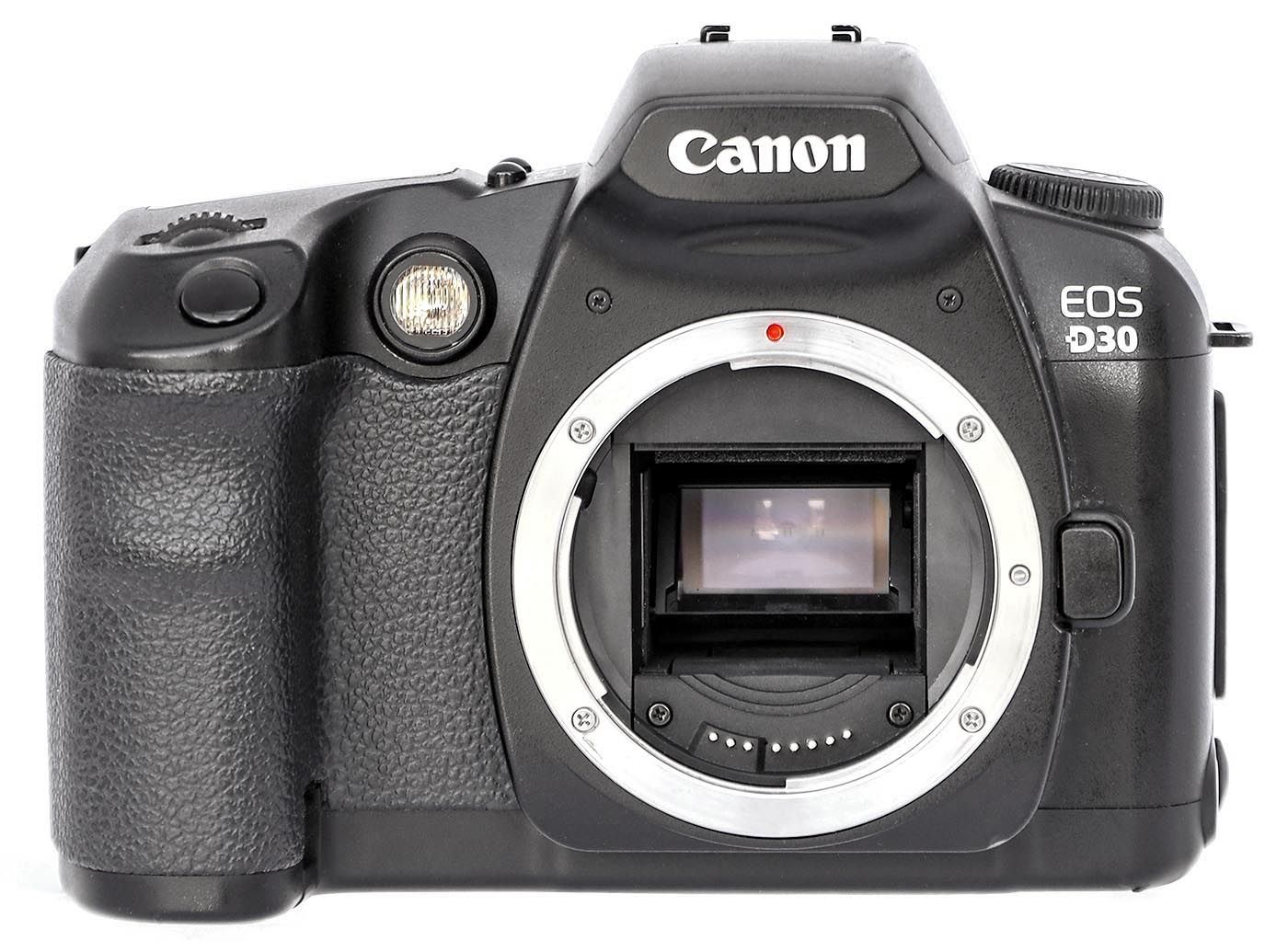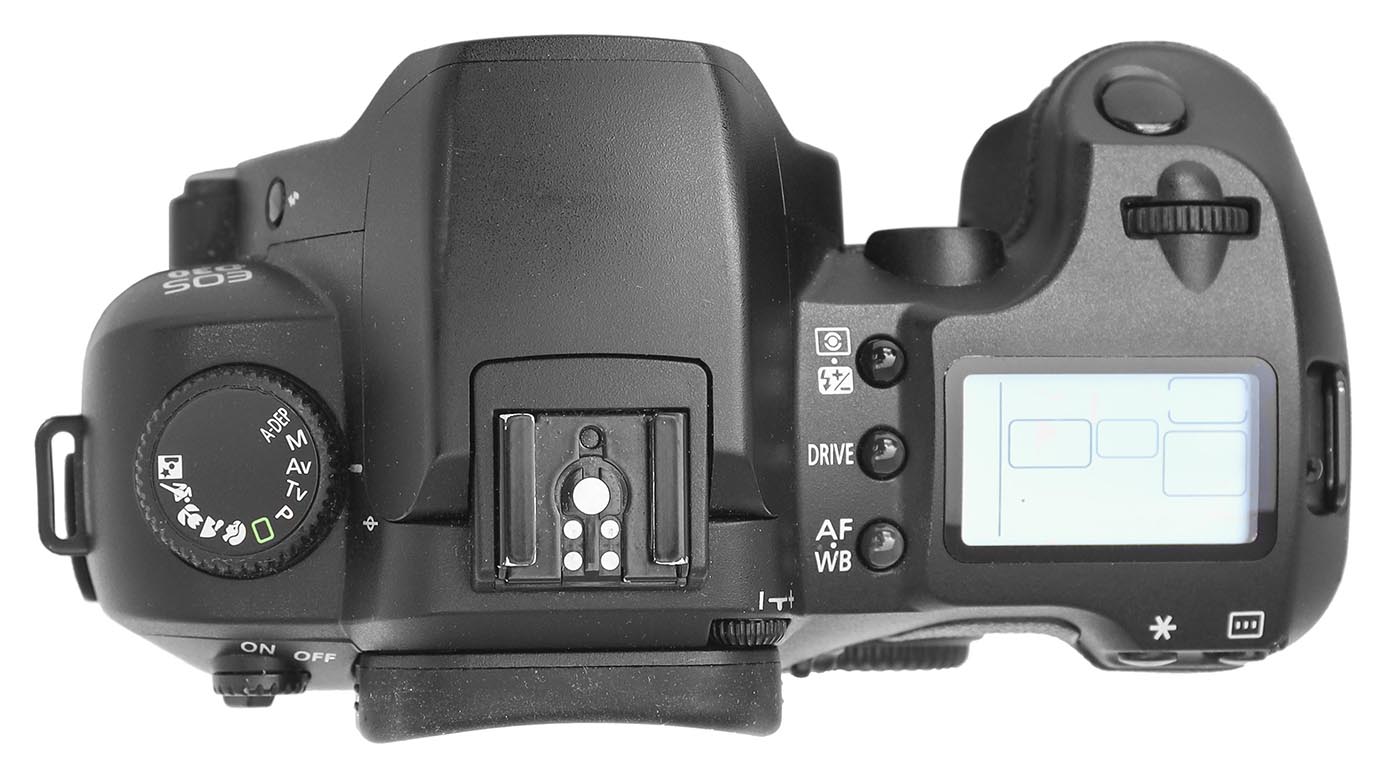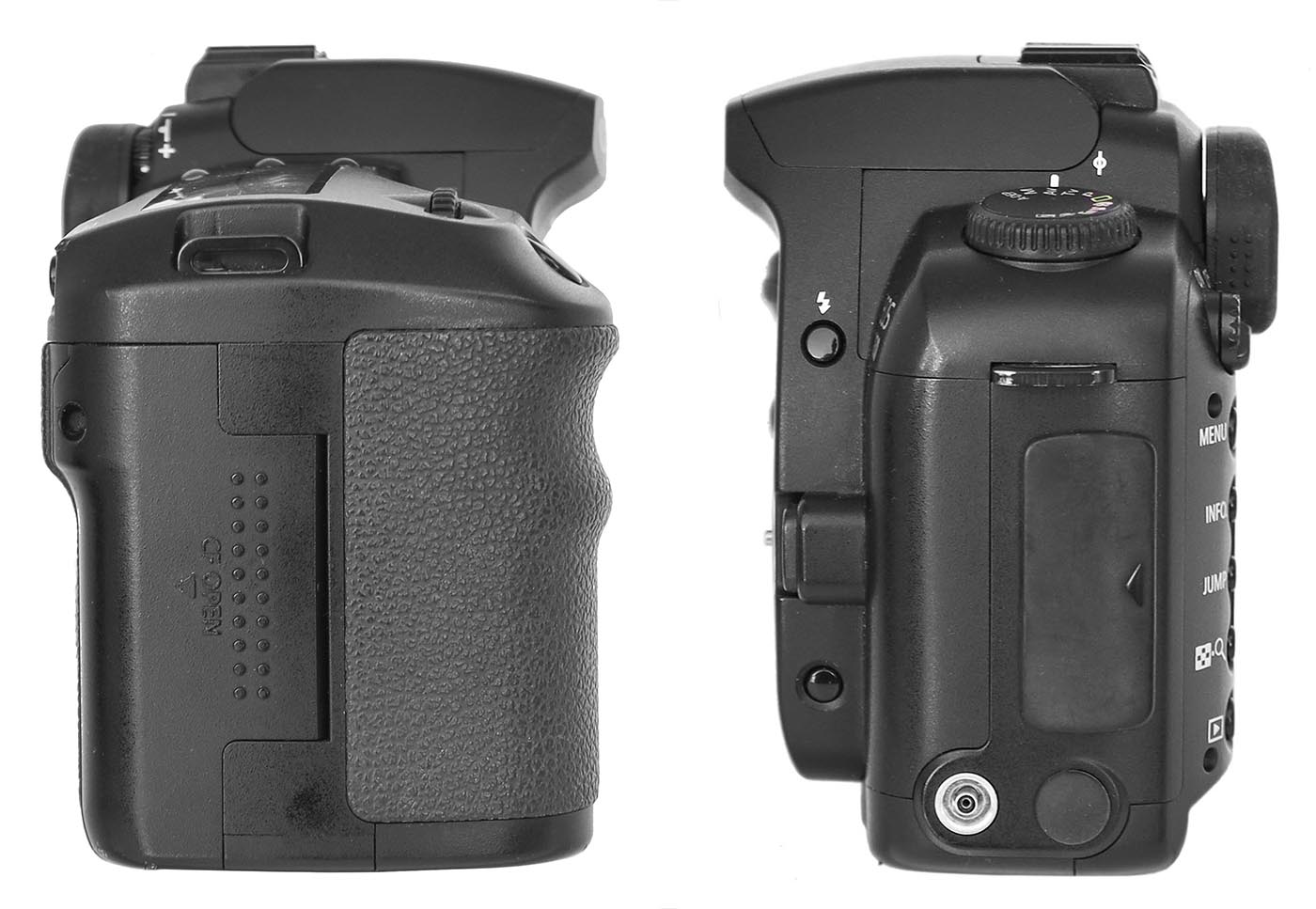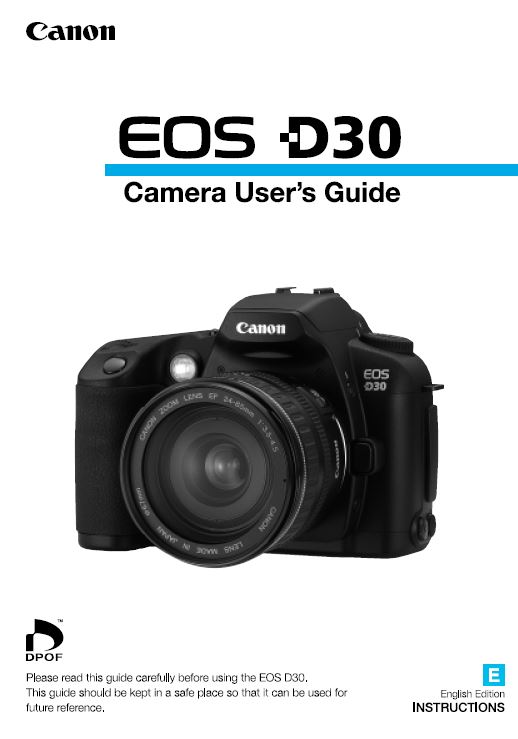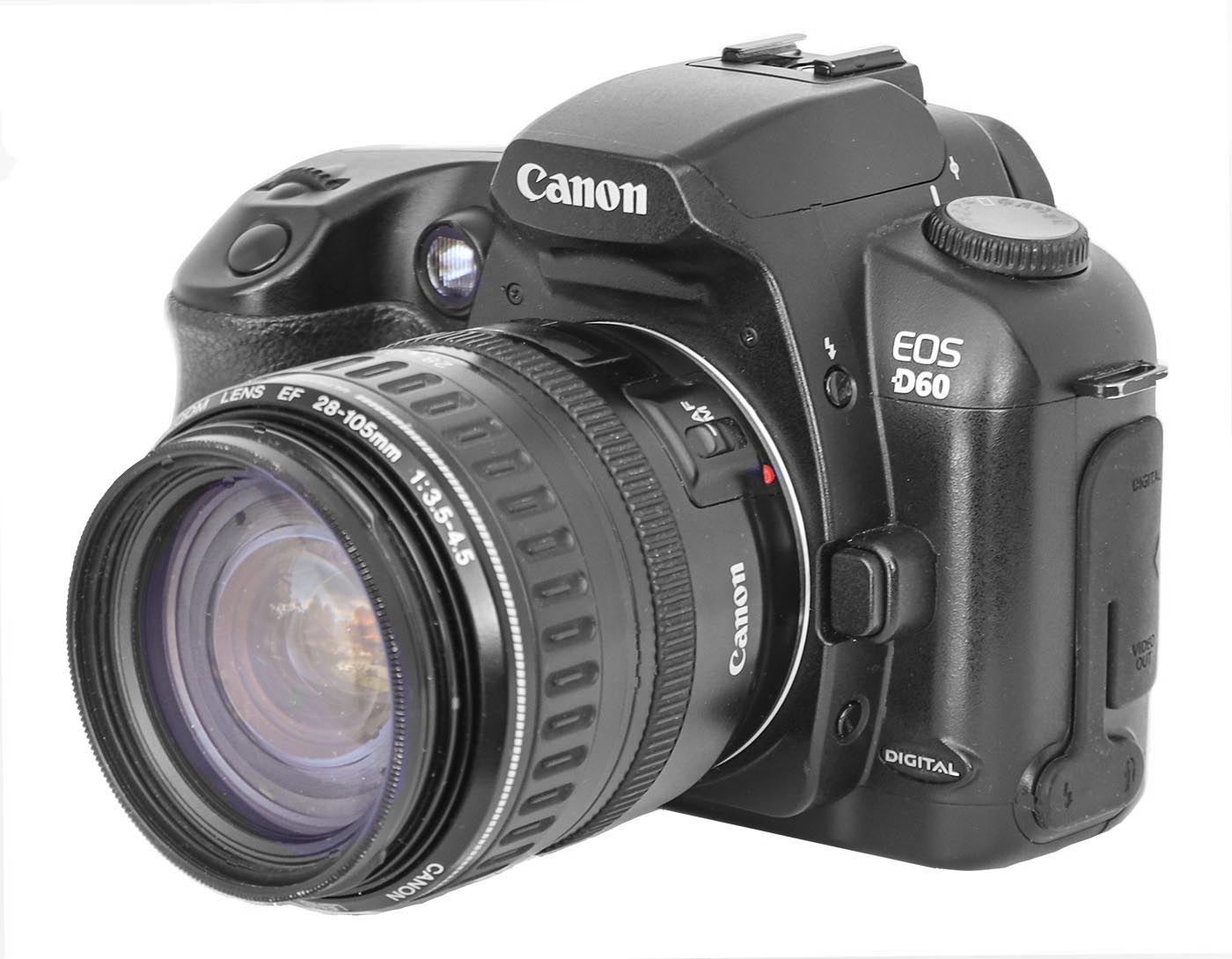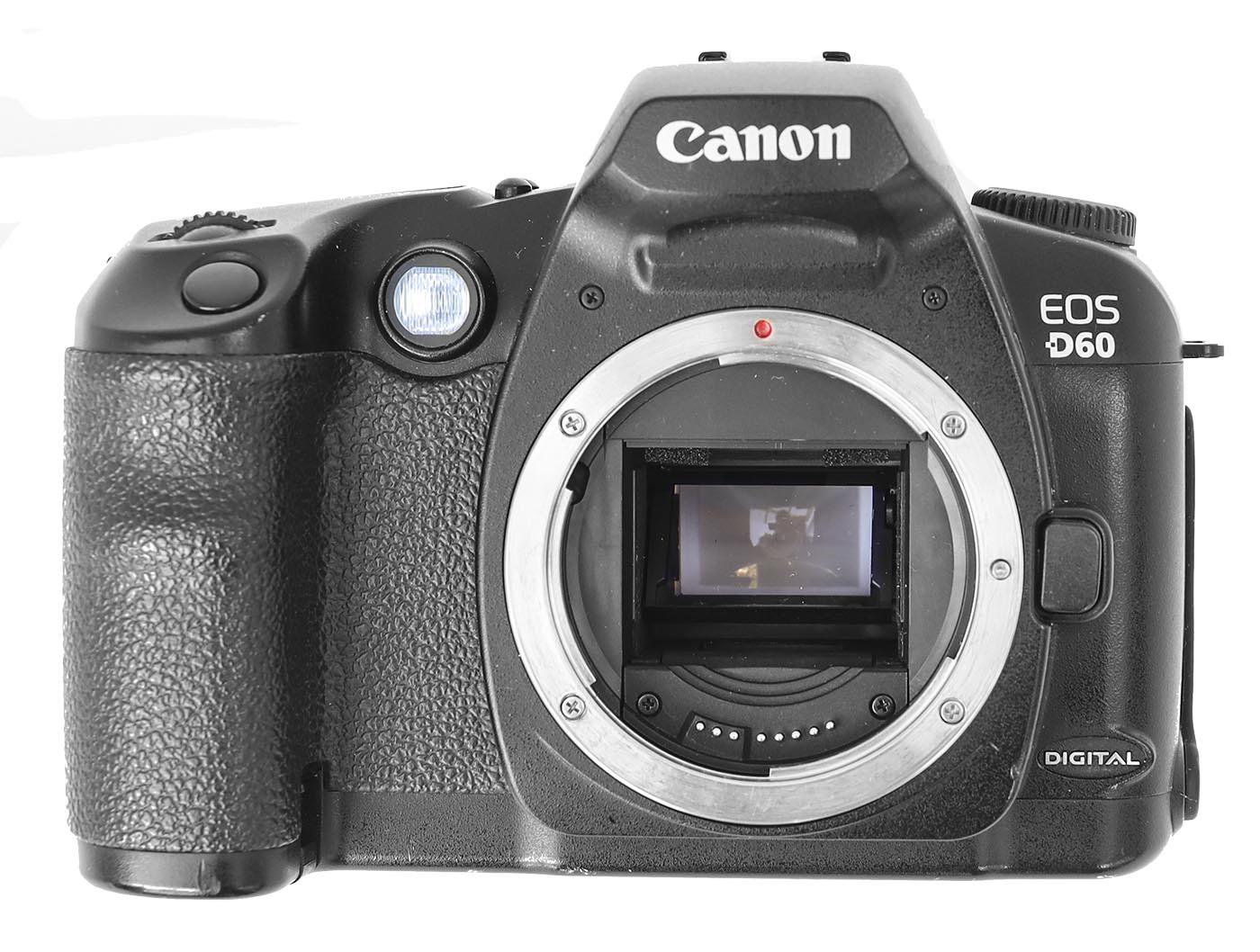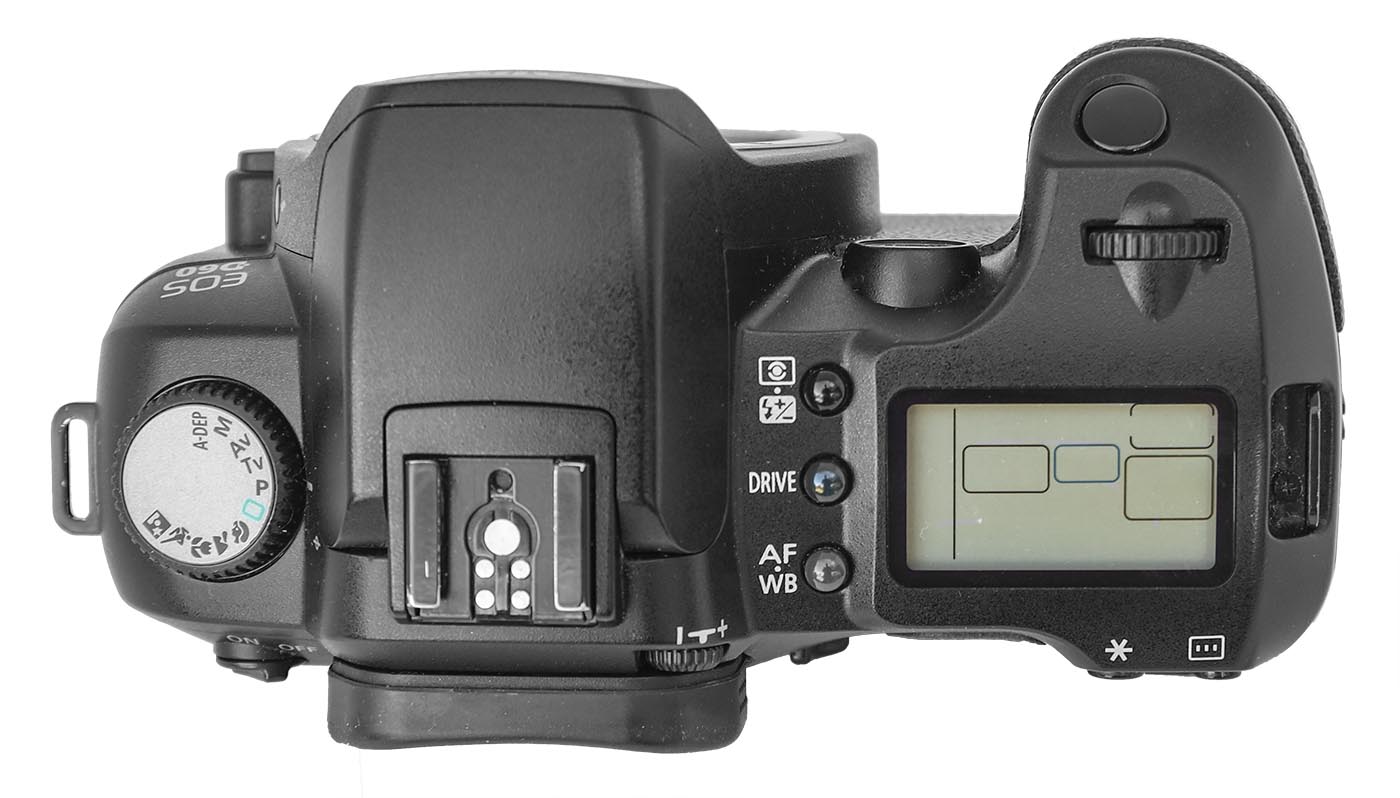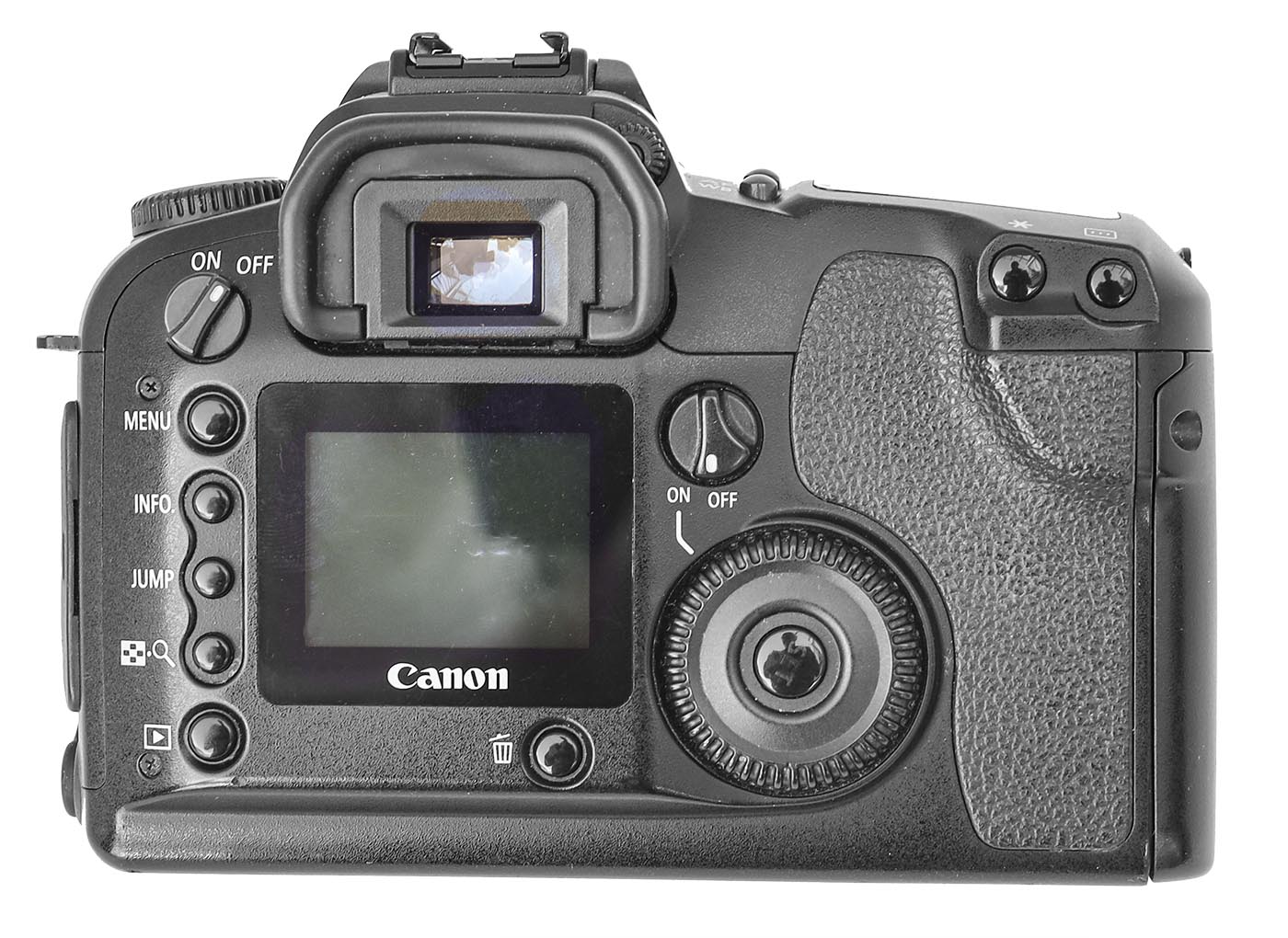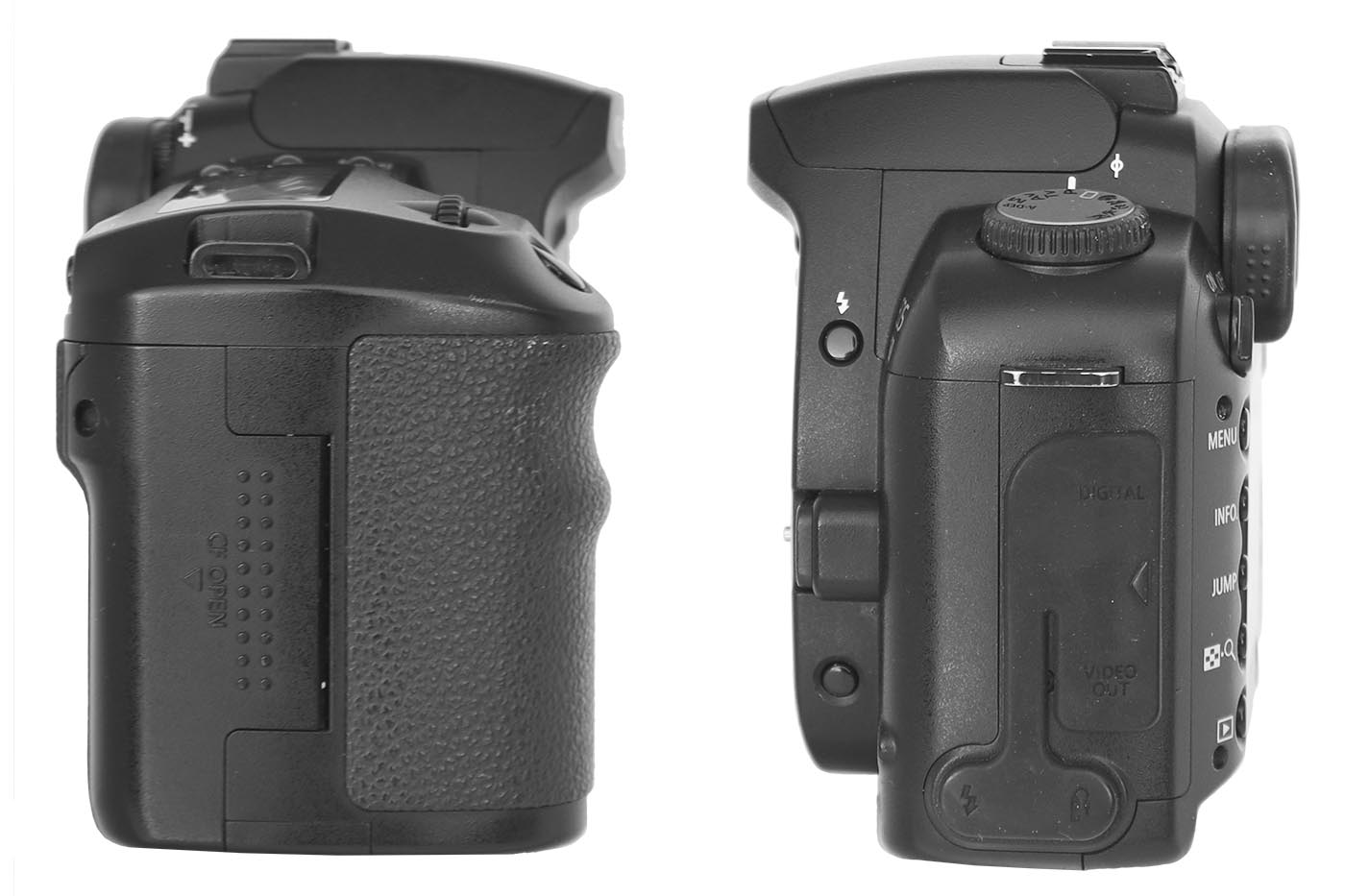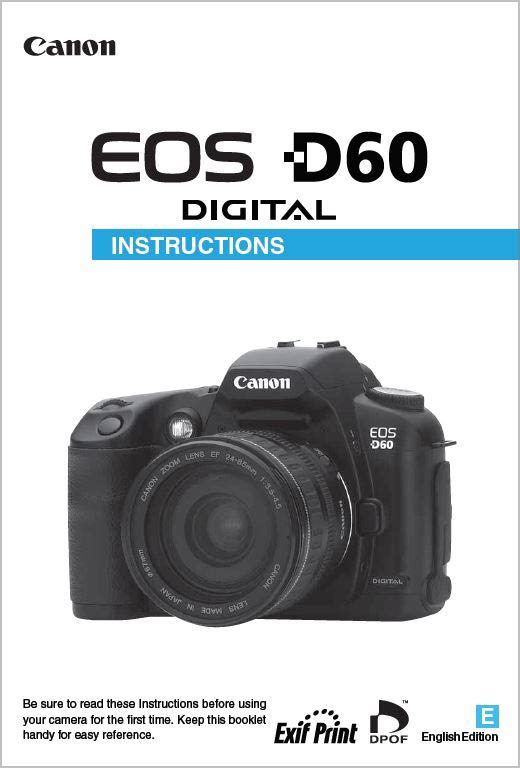
The Almost Professional “D” Series
The APS-C enthusiast / semi-professional Cameras
By the year 1990 Canon had settled on a three tiered marketing scheme. Firstly there were the cameras aimed at professional users who demanded the highest standards in dependability and features. These cameras were the various EOS 1 models.
At the bottom of the camera lineup were the entry level models best represented by the Rebel cameras. These were competent cameras capable of fine pictures but their feature set was limited and the construction was dependable but light weight. These were well suited to those who wanted to move up from point and shoot cameras and learn more advanced photographic techniques.
In between these two extremes were the cameras aimed, not at the professionals but the serious amateurs and photography enthusiasts. These were users who knew cameras and demanded professional features but at a more modest price than the professionals were expected to pay. These cameras went by the name Elan.
And in the enthusiast camera group there was another series represented by the EOS 10, the EOS 5 and the EOS 3.
The EOS 3 looks and feels like a modern digital camera. It is as heavy as a 5D and feels the same in the hand. And the shooting expereince is very much the same. It is an exceptional camera and very enjoyable to shoot.
These cameras were semi-professional in every way: they were feature rich, heavy, well made instruments that felt like their senior siblings, the EOS 1’s.
By the time the EOS 3 was introduced in 1998 Canon was almost at the end of its film camera development and the three represented the then current state of camera development.
Shooting the EOS 3 is really a digital experience without the ability to see the picture immediately. Film transport was quiet and almost instantaneous. Exposure is completely automatic, if desired, and the autofocus is superb. All Canon EOS lenses were comparable with the 3’s body.
Canon entered the digital arena in co-operation with Kodak who built a series of digital cameras on Nikon and Canon bodies by adding a sensor back and graphics processing unit underneath looking much like a power winder.
If we chart the development of Film EOS Cameras we can see the enthusiast cameras above the Elan series from the EOS 10 through to the EOS 3. In form and operation these cameras will be very familiar to anyone used to shooting with a modern advanced DSLR.
Charting the DSLR cameras in the same manner we can see Canon’s first “in house” digital camera was the D30 which was a natural progression from the EOS 3. These two cameras are very similar in form and operation.
DSLR Comparison Chart
The chart that follows is a rough summary of the cameras that follow:

Canon Goes Digital
The Kodak DCS 560 was a composite camera built on a Canon EOS 1N body. It was a 6 megapixel camera first offered in 1998 by Canon as the Canon EOS D6000. This image is of a Kodak branded D6000.
To repeat myself somewhat, Kodak developed the digital camera as early as 1975 but that was a long way from a viable product. It was not until 1995 that they produced one of the first commercial digital cameras for consumer use. That camera was the Kodak DC40. It had 0.38 megapixel sensor and a fixed 42mm equivalent lens.
At the same time they were working on more advanced digital cameras built on Nikon and Canon bodies. The first of these was marketed in 1991 built on a Nikon F3 SLR. In all of these cameras, Kodak modified a camera body and then added a new back and digital package that mounted under the camera.
In 1995 they they came out with the DCS series built on the Canon EOS-1N. Canon rebranded three of these and sold them as the EOS DCS1, 2 and 5. In 1998 these were followed with the Kodak DCS 500 series which Canon sold as the EOS D2000 (a 2 megapixel camera) and EOS 6000 (a 6 megapixel camera). In all of these cameras, the digital sensors and processors were of Kodak design and manufacture grafted onto an EOS 1N body.
But it still remained for Canon to produce a home grown totally Canon digital camera.
Canon EOS D30
The D30 is one in a line from the EOS 3 to the 90D and bears all the family resemblances.
The small mirror hides the reduced size of the APS-C sensor behind it.
In the year 2000 Canon’s top semi professional camera was the EOS 3. This camera sat at the top of the prosumer / enthusiast / semi professional group. When Canon decided to develop an in house digital camera for the first time it was this market slot they targeted. And the camera they came up with was the D30. If an EOS 3 user picked up a D30 he would feel completely at home. Although revolutionary, it was still familiar.
The D30 was announced by Canon in May of 2000 which was only five years after Kodak’s DC40, first consumer grade digital camera. Up to this point semi professional or professional digital cameras were very expensive. This camera was introduced for about $3,000 USD which was considered, at the time, to be very reasonable for a camera of this caliber. Although only 3.1 megapixels, it was revolutionary, and for those who used film, the convenience of digital was liberating. We must be careful to judge these old cameras by the standards of their day and what was available to those people.
The camera was remarkable in another way: the CMOS sensor was developed by Canon and was the first multi-megapixel CMOS sensor to be offered in a commercially available camera. With three focus points, a 35 zone evaluative metering, system and shutter speeds from 30 seconds to 1/4000th shutter, the D30 performed like the EOS 3. In operation it also felt the same having comparable weight, size and feel. Having said that, being used to modern DSLR’s the file processing on this camera feels slow and the LCD on the back seems very small.
Although the D30 had an APS-C cropped sensor, it had an EF lens mount so that it was compatible with all of Canon’s current lenses. It came into being with a full system of lenses and accessories available to it.
Was it a better camera than the EOS 3? Well, that is a matter of opinion. The EOS 3 had a richer feature set and film definitely gave better resolution than 3.1 megapixels. Unless the added convenience of digital was important to the user, the EOS 3 was probably the better choice. This was obviously the view of Canon who continued to market the EOS 3 well into 2007 when they were marketing the 8.1 megapixel 30D, four digital models on.
This is not a review of the features of this camera when so many others have already done this. dpReview has a review of the D30 where you can see how the camera was viewed at the time. You can find the User Manual for it below for full details on all of its features.
In the Collection I have the following example:
Collection No.: C80
Serial Number: 172800749
Condition: Overall, excellent (attached D30 photos are of my camera)
Notes: This camera is fully functional.D60
Comparing the images of the D60 and the D30 one quickly sees that these are two cameras with a common ancestry. A user of the D30, or indeed the EOS 3, will be right at home with this camera. The changes from the one camera to the other are an evolution and not a revolution.
The main change is the increase in resolution from 3.1 to 6.3 megapixels. A doubling of resolution is a major improvement. As the size of the sensor, APS-C, did not increase the area of each light cell necessarily is reduced. As a result the available ISO settings run from 100 to 1000, a reduction in sensitivity resulting from the reduced cell size.
Other than that, these two cameras a very comparable. There are more menu options and shooting settings but I am not going to detail them here. They can be found in the manual for the camera, which you can find below, and in the dpReview product review of the D60 .
In the Collection I have the following example:
Collection No.: C161
Serial Number: 1020500576
Condition: Overall, excellent (attached D60 photos are of my camera)
Notes: This camera is fully functional.
Have Patience – This Page is not Finished Yet!



